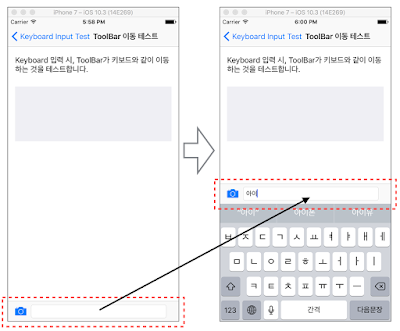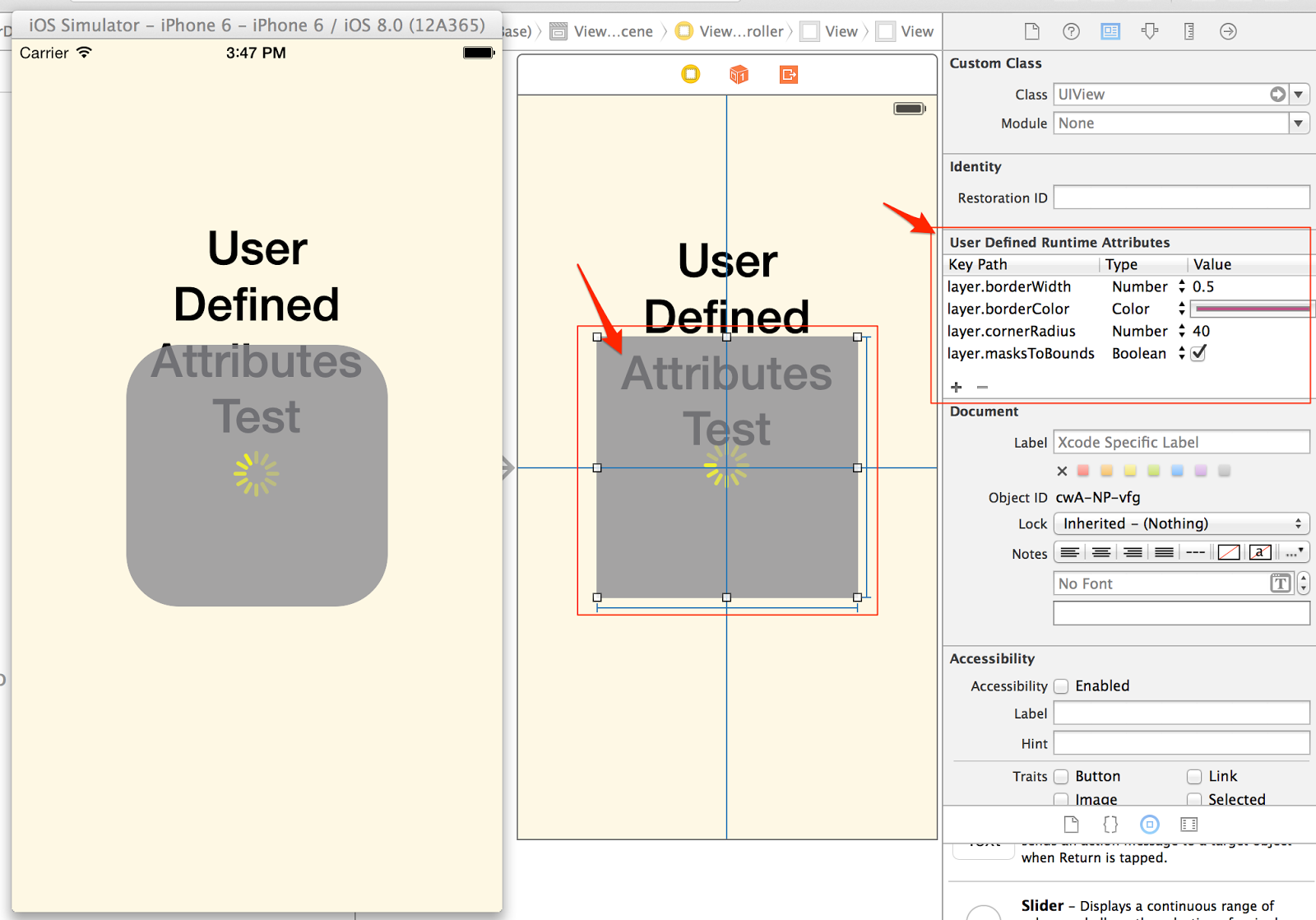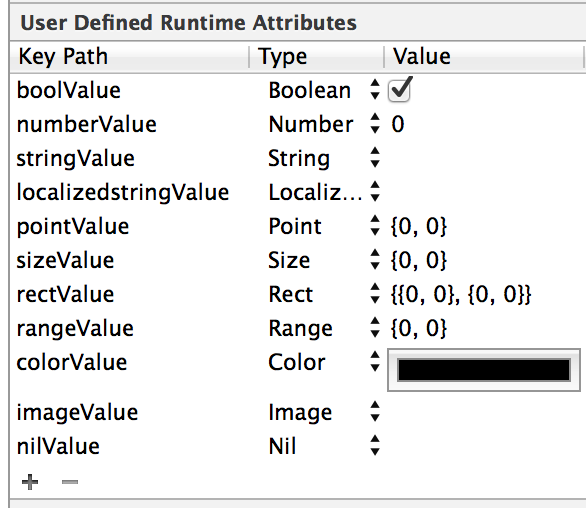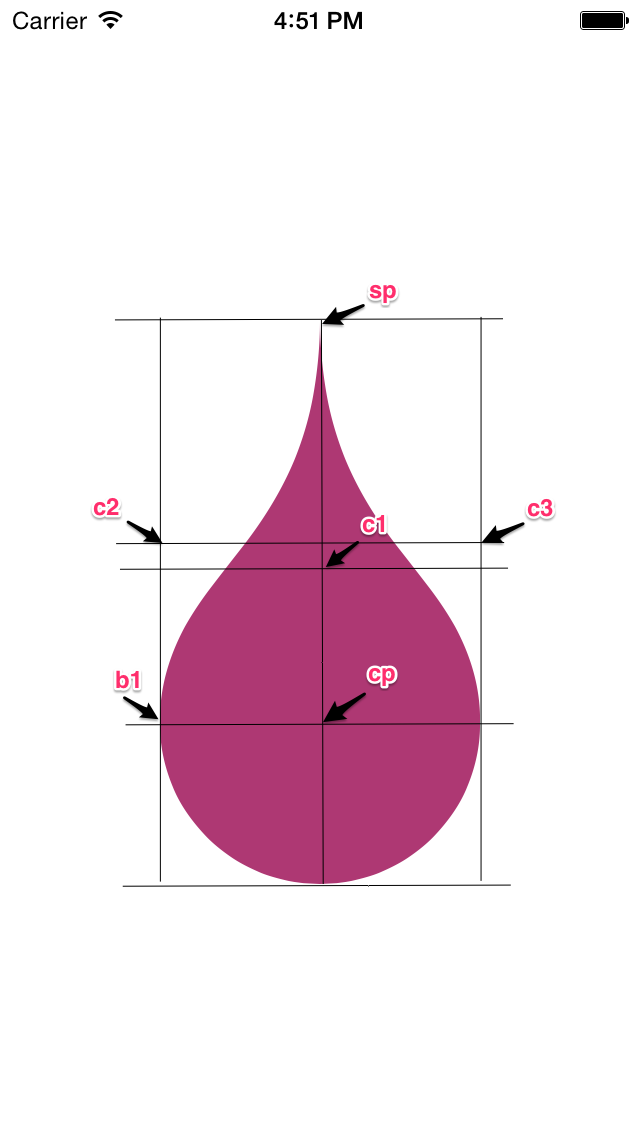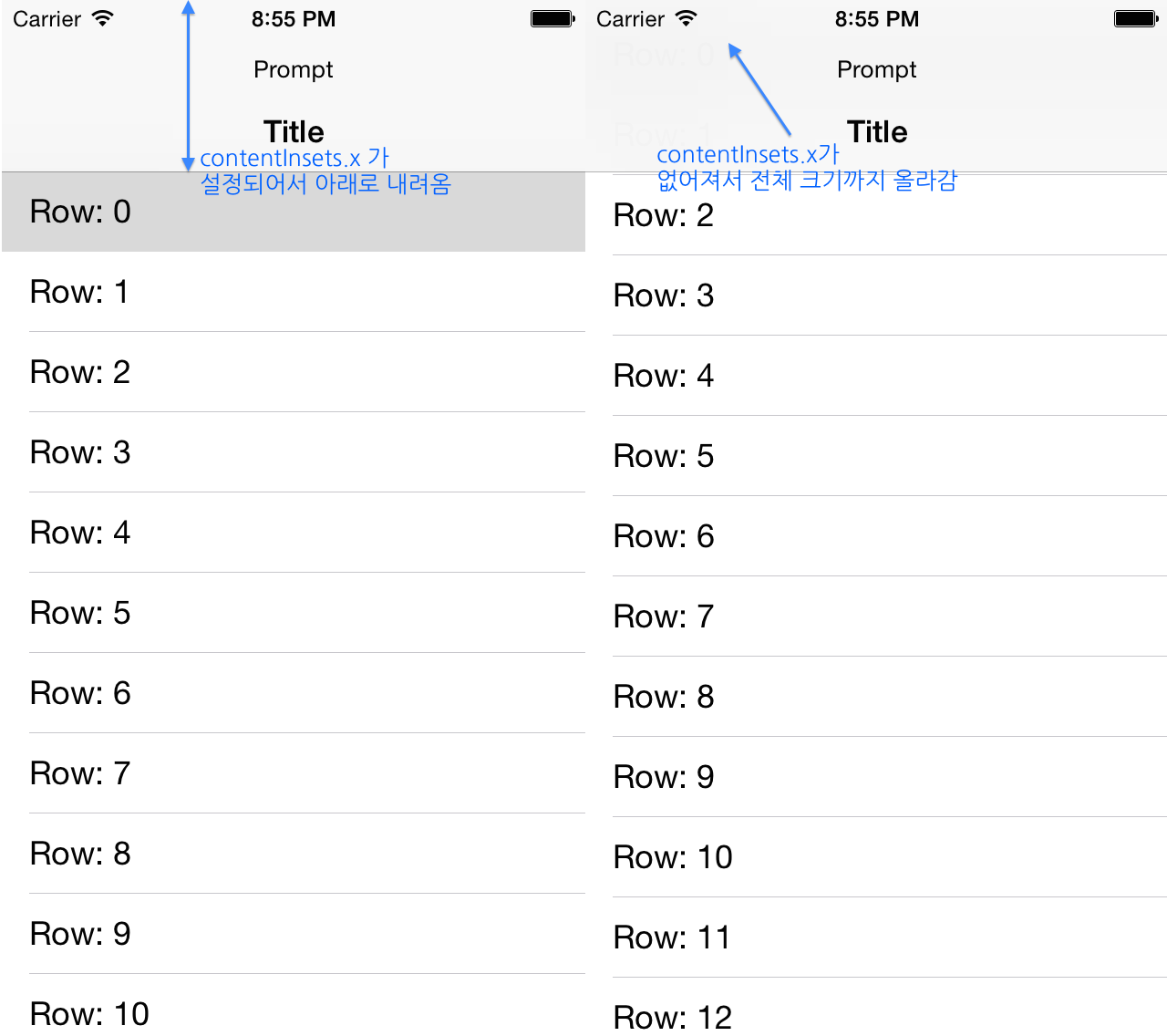지난 블로그에서는 Objective-C를 기준으로 정리하였는데, 이제는 Swift를 기준으로 정리한다.
일반적인 UIViewController 내에서는 표시할 위치를 이동시켜야, 키보드에 덮히지 않고, 사용자에게 표시할 수 있습니다.
키보드가 표시될 때 전달되는 이벤트는...
필요한 이벤트를 viewWillAppear 함수에서 NotificationCenter에 등록합니다.
자 이제, 키보드가 표시될 때 마다, 해당 함수들이 호출이 된다.
그럼 다음으로 넘어가자.
이벤트로 전달되는 NSNotification 클래스의 userInfo에서 해당 내용을 가져와야 알 수 있습니다.
키보드가 표시되는 Frame의 정보는 시작할 때와 표시가 다 되었을 때, 어디에 위치할지 알아낼 수 있습니다.
userInfo를 가져와서 description을 출력해 보면 아래와 같습니다.
NSConcreteNotification 0x610000242460 {name = UIKeyboardWillShowNotification; userInfo = {
UIKeyboardAnimationCurveUserInfoKey = 7;
UIKeyboardAnimationDurationUserInfoKey = "0.25";
UIKeyboardBoundsUserInfoKey = "NSRect: {{0, 0}, {375, 258}}";
UIKeyboardCenterBeginUserInfoKey = "NSPoint: {187.5, 796}";
UIKeyboardCenterEndUserInfoKey = "NSPoint: {187.5, 538}";
UIKeyboardFrameBeginUserInfoKey = "NSRect: {{0, 667}, {375, 258}}";
UIKeyboardFrameEndUserInfoKey = "NSRect: {{0, 409}, {375, 258}}";
UIKeyboardIsLocalUserInfoKey = 1;
}}
위에서 표시되는 각 UserInfoKey에 대해서 조금 더 자세히 봅시다.
- UIKeyboardAnimationCurveUserInfoKey : 키보드가 표시될 때 Animation Curve
- UIKeyboardAnimationDurationUserInfoKey : 키보드 표시되는 시간
- UIKeyboardBoundsUserInfoKey : 키보드의 Bounds로 크기를 알 수 있는 bound
- UIKeyboardCenterBeginUserInfoKey : 키보드 표시되기 시작할 때의 중심 Point
- UIKeyboardCenterEndUserInfoKey : 키보드 표시된 후의 중심 Point
- UIKeyboardFrameBeginUserInfoKey : 키보드가 표시되기 시작할 때의 frame
- UIKeyboardFrameEndUserInfoKey : 키보드가 표시된 후의 Frame
- UIKeyboardIsLocalUserInfoKey : 지금 표시되는 키보드가 Current App에 속한 것인지 True/False로 가지고 있음. iPad의 경우 여러 App이 화면에 표시될 수 있는데, 다른 App이 표시하는 키보드인지 내가 표시한 키보드인지 구분할 수 있음. 이것이 False이면 반응하면 안됨. (iOS 9 이상에서 지원)
아래 처럼 각 호출되는 함수에서 정보를 출력해 봅니다.
SourceCode
fileprivate func info(name str:String, with notification:NSNotification) {
if let userInfo = notification.userInfo {
let frameBegin = (userInfo[UIKeyboardFrameBeginUserInfoKey] as? NSValue)?.cgRectValue ?? CGRect.zero
let frameEnd = (userInfo[UIKeyboardFrameEndUserInfoKey] as? NSValue)?.cgRectValue ?? CGRect.zero
let curve = userInfo[UIKeyboardAnimationCurveUserInfoKey] as? NSNumber ?? NSNumber.init(value: 0)
let duration = (userInfo[UIKeyboardAnimationDurationUserInfoKey] as! NSNumber ).doubleValue
print("\(str) (\(Int(frameBegin.origin.x)),\(Int(frameBegin.origin.y)),\(Int(frameBegin.size.width)),\(Int(frameBegin.size.height))), (\(Int(frameEnd.origin.x)),\(Int(frameEnd.origin.y)),\(Int(frameEnd.size.width)),\(Int(frameEnd.size.height))) curve:\(curve), duration:\(duration)")
}
}
3. 결과로 나오는 값은 어떻게 될까요?
iPhone7
세로
Keyboard Will beShown (
0,667,375,258), (
0,409,375,258) curve:7, duration:0.25
Keyboard Was Shown (0,667,
375,258), (0,409,375,258) curve:7, duration:0.25
Keyboard Will beHidden (0,409,375,258), (0,667,375,258) curve:7, duration:0.25
Keyboard Was Hidden (0,409,375,258), (0,667,375,258) curve:7, duration:0.25
가로
Keyboard Will beShown (
0,375,667,194), (
0,181,667,194) curve:7, duration:0.25
Keyboard Was Shown (0,375,
667,194), (0,181,667,194) curve:7, duration:0.25
Keyboard Will beHidden (0,181,667,194), (0,375,667,194) curve:7, duration:0.25
Keyboard Was Hidden (0,181,667,194), (0,375,667,194) curve:7, duration:0.25
위 결과를 보시면, 표시되기 전에는 화면 아래 부분에 있다가 표시되면, 위로 올라오게 됩니다.
가로/세로 모드일때 따라서, 키보드의 위치와 크기가 달라집니다.
위 정보를 이용해서, UIViewController에서 ToolBar나 TextField가 키보드 아래에 있을 때, 키보드가 표시될 때 위로 이동시켜서 화면에 표시할 수 있고, 키보드가 사라질 때, 원래 위치로 이동할 수 있습니다.


